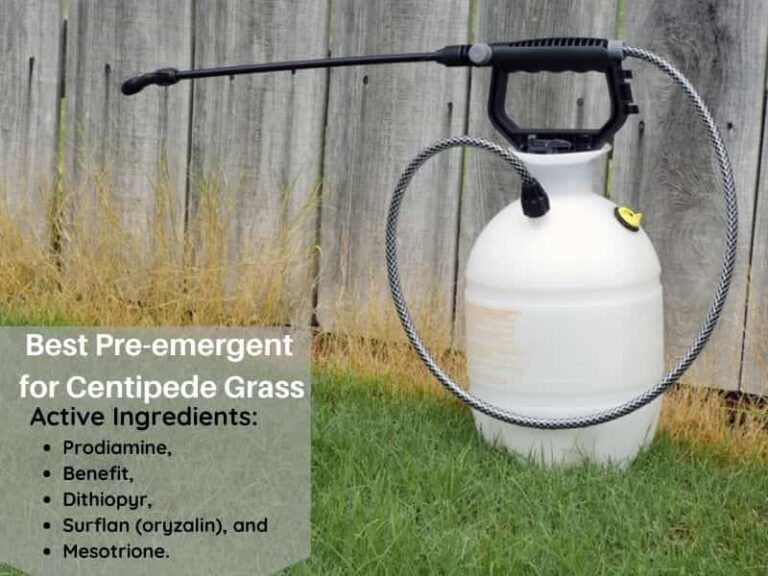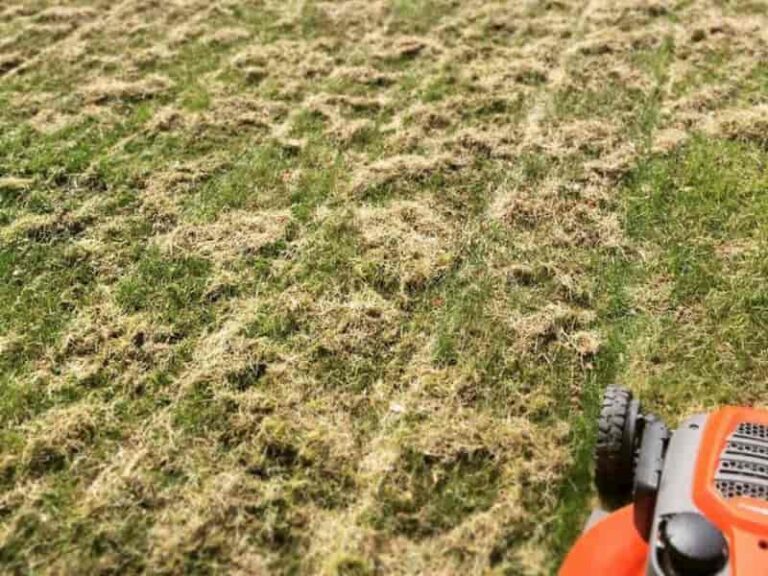Best Grass to Mix with Centipede
Centipede grass is a low-maintenance turfgrass with a beautiful apple-green color. The Chinese native is one of the most preferred varieties for lawns in the south for its low maintenance and resilience in poor soils.
However, it comes up short in terms of traffic and shade tolerance while also being vulnerable to a unique condition called ‘centipede decline’ . Bermuda grass is great grass to mix with centipede grass if susceptibility to disease is your biggest concern. However, their different fertilizer needs, water needs, growth rates, and different color hues might change your mind.
Here’s a breakdown of other grass varieties compatible with centipede grass to make your lawn look exceptional.
3 best grasses to mix with centipede
The best grasses to mix with centipede grass are St. Augustine grass, Dwarf fescue, and Bermuda grass. These grasses will improve the shade tolerance, wear hardiness, and aesthetic appeal of your centipede lawn.
St. Augustine Grass
St. Augustine grass and centipede grass thrive in full, direct sunlight. However, centipede grass tends to weaken in shaded lawns. By contrast, St. Augustine grass is fairly shade-tolerant and can be mixed with a centipede to improve the overall appearance of the shaded turf.
Centipede grass has an apple-green shade if you prefer more prominent shades of green. If you prefer a lawn with blended shades, St. Augustine grass is a great way to add a darker shade of green to your turf.
St. Augustine grass also has the following additional benefits:
- Has high salt tolerance: St. Augustine grass will grow in saline soils common in coastal regions. Centipede grass has poor salt tolerance and is likely to suffer salinity stress. Mixing it with St. Augustine on a lawn with mildly saline soils can improve your turf’s health and look.
- Early spring green-up: St. Augustine grass greens up early in the spring. This makes it a good pair for centipede grass, which grows slowly and may not look its best when recovering from winter freeze injury in the spring.
- Forms thick turf: A thick turf makes it difficult for weeds to establish and overwhelm the lawn.
However, St. Augustine grass can’t be propagated via seed. You’ll, therefore, have to plant St. Augustine sod pieces on the bare spots where the centipede turf has died.
Unlike centipede grass which thrives in acidic soil, St. Augustine grass can’t thrive in low-pH soil. Maintain your lawn soil pH between 6.0-6.5. , add agricultural lime to reduce your lawn soil’s acidity.
Dwarf Fescue
Unlike most warm-season turfgrasses, centipede grass doesn’t go dormant in the winter. As such, it suffers significant frost damage to the shoots and doesn’t recover until the next spring.
Fescues, which are a variety of cool-season grasses, are a great way to keep your lawn green during the cool season as the warm-season grass withers due to cold injury.
However, most fescues grow tall and will delay centipede grass’ spring greening. So, the best option is to use dwarf fescue, a fescue cultivar with a low growth profile.
Dwarf fescue is more shade tolerant than centipede grass and will fill in the shaded areas of the lawn. What’s more, if you have children and pets that constantly play on your centipede lawn, hardy dwarf fescue is a great way to boost the wear tolerance of the turf.
Note: Dwarf fescue is a cool-season grass and will keep the lawn green from mid-summer-winter if centipede decline occurs.
To successfully overseed your centipede grass lawn with dwarf fescue, broadcast 8-10 lbs. dwarf fescue grass seed every 1000 square feet. Then, cover the seeds with ¼-inches of topsoil and water the lawn to spur germination. The first mowing should be done after the dwarf fescue grass reaches at least 2 inches, usually about a month after overseeding.
Bermuda Grass
Bermuda grass(Cynodon dactylon) is one of the most compatible turf grasses with centipede grass due to the benefits it brings to a lawn. For starters, Bermuda grass is stoloniferous and rhizomatous, making it a fast-spreading turf grass.
By contrast, centipede grass only spreads via stolons and grows slowly, making it slow to recover from damage. If you have unsightly bare patches on your centipede yard due to slow recovery, consider seeding these bare spots with fast-growing Bermuda grass.
Bermuda grass also has excellent wear-hardiness, while centipede grass can only tolerate light-moderate traffic. Overseeding centipede grass with Bermuda improves your turf’s tolerance to heavy traffic.
Additional advantages of Bermuda grass include
- Excellent drought tolerance: It’s able to withstand prolonged periods of drought. It has an excellent survival rate when it’s faced with extreme conditions.
- Spreads quickly: Bermuda grass spreads aggressively and is thus able to crowd out most weeds.
- Visually appealing: Bermuda forms fine-textured, dense, medium-green turf.
- Exceptional salt tolerance: Salty soils are typically water-deprived. However, Bermuda grass will thrive in these soils to impressive extremes.
Note, though, Bermuda grass will choke out centipede grass if you don’t maintain the proper mowing practices. Since centipede grass is low-growing, always keep the lawn at a height of 2-3 inches. Doing this prevents Bermuda grass from crowding out the centipede grass.
Note: The recommended seeding rate for Bermuda grass is 5-10 lbs. of hulled Bermuda grass seed per 1,000 square feet. Use more seeds for seeding if the Bermuda grass seeds are coated.
I would not recommend, thus reconsider mixing these two types of grass because of their varying fertilizer, mowing, and water needs. Bermuda grass needs nitrogen a lot more than Centipede grass. Mixing them and fertilizing the lawn with Nitrogen fertilizer will leave unsightly patches on your lawn. In addition bermuda does poorly in shaded area thus you may end up with bare spots on shady lawn.
Tips on how to mix grasses
- Wait at least 90 days before overseeding if you had used a pre-emergent on the existing lawn and are planning to overseed with a different type of grass for a mixed lawn. The waiting period will allow enough time for the pre-emergent herbicide to break down in the soil. Overseeding sooner increases the risk of your desirable grass seed failing to germinate due to suppression by the still-active pre-emergent.
- Avoid mowing the lawn until the roots of the new grass type you overseeded with are well established in the soil.
- Mix a bit of the grass seed of the existing lawn with the seeds of the grass type you’re introducing to reinvigorate the existing grass type.
Here are few things to consider about centipede when choosing the grass to mix with.
References
- Jordan Van de Voort, North Dakota State University (NDSU)- Bermuda Grass
- JianJian Li et al., National Library of Medicine- National Center for Biotechnology Information: Growth and physiological responses of two phenotypically distinct accessions of centipede grass (Eremochloa ophiuroides (Munro) Hack.) to salt stress



